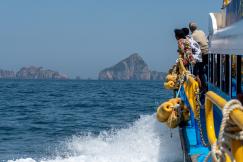Policy
23 August 2024
Commission Recommendation on the use of the environmental footprint methods
Policy
23 August 2024
Adventure tourism
Coastal, maritime and inland water tourism
Cultural tourism
+42 more
Login / create an account to be able to react
-
49

The Commission Recommendation provides comprehensive guidelines for using Environmental Footprint methods to measure and communicate the environmental performance of products and organizations, aiming to enhance transparency, comparability, and reliability of environmental information.
European Commission
Topics
Austria
Belgium
Bulgaria
Croatia
Cyprus
Czechia
Denmark
Estonia
EU-27
Finland
France
Germany
Greece
Hungary
Italy
Latvia
Lithuania
Luxembourg
Malta
Netherlands
Norway
Poland
Portugal
Romania
Slovakia
Slovenia
Spain
Sweden
Academic / Research and VET Institutions
Company with 250 or more employees
Consumer Organisations
Cultural and Heritage Organisations
Destination Management & Marketing Organisations
EU Institutions
Financial Institutions and Investors
Industry Associations and Chambers of Commerce
International Organisations
Local Authorities
Media / Journalist Organisations
National authorities
Networks and Federations / Confederations
NGOs / Non-profits
Regional Authorities
SMEs (a company with less than 250 employees)
Trade Unions
-
Specific types of tourism
-
-
Adventure tourism
-
Coastal, maritime and inland water tourism
-
Cultural tourism
-
Ecotourism
-
Education tourism
-
Festival tourism
-
Gastronomy tourism
-
Health and medical tourism
-
MICE tourism
-
Mountain tourism
-
Religious tourism
-
Rural tourism
-
Sports tourism
-
Urban/city tourism
-
Wellness tourism
-
-
Transition Pathway Strategic Areas
-
-
Circularity of tourism services
-
Governance of tourism destinations
-
Green Transition of Tourism Companies and SMEs
-
Sustainable mobility
-
-
Business activities
-
-
Activities of amusement parks and theme parks
-
Activities of associations and other organisations supporting tourism
-
Air passenger transport
-
Camping grounds, recreational vehicle parks and trailer parks
-
Events catering and other food services
-
Festivals, cultural and entertainment activities
-
Gardens and nature reserves activities
-
Holiday Housing / Apartments and other short stay accommodation
-
Hotel and similar accommodation
-
Mobile beverage services
-
Mobile food services
-
Museums
-
Operation of historical sites
-
Other
-
Other accommodation
-
Other amusement and recreation activities
-
Other food and beverage services
-
Other holiday reservation services
-
Other tourism transportation activities
-
Rail Passenger transport
-
Recreational and sport activities
-
Restaurants, cafes and bars (Food and Beverage serving activities)
-
Road passenger transport
-
Tour operator activities
-
Travel agency activities
-
Water (sea, coastal and inland) passenger transport
-
Share
The Commission Recommendation on the use of the Environmental Footprint methods offers comprehensive guidelines for measuring and communicating the environmental performance of products and organizations. These guidelines utilize the Environmental Footprint (EF) methods and include detailed instructions on data collection, impact assessment, and reporting.
The primary goal of this recommendation is to promote standardized methods for assessing and communicating the environmental impacts of products and organizations throughout their life cycles. This standardization aims to enhance the transparency, comparability, and reliability of environmental information, which in turn supports sustainable decision-making and helps reduce the risk of greenwashing.
The recommendation also emphasizes the importance of continuous improvement and innovation in environmental footprinting. It encourages ongoing research and development to refine the EF methods and expand their application. Additionally, it highlights the potential for EF methods to contribute to global sustainability efforts by providing a harmonized approach to environmental assessment.
For an in-depth analysis and further insights, please visit the linked source on the left-hand side of the platform.
#Circular tourism economy #Green transition #Resource efficiency
Documents
Comments (0)
Related content
See also
Overview and progress of the Circular economy action plan
- Categories
- Coastal, maritime and inland water tourism Cultural tourism Ecotourism +41 more
European Commission's Communication on a new circular economy Action Plan for a cleaner and more competitive Europe
- Categories
- Coastal, maritime and inland water tourism Cultural tourism Ecotourism +41 more
Eco-Management and Audit Scheme: Enhancing environmental performance
- Categories
- Coastal, maritime and inland water tourism Cultural tourism Ecotourism +40 more






